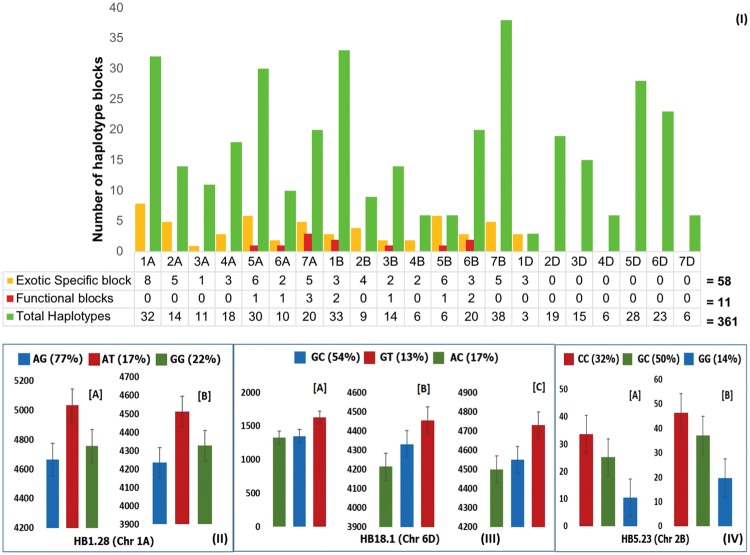Figure 2.
(I) Total number of haplotype blocks (HBs), number of HBs introgressed from exotic parents, and number of functional exotic-specific HBs (associated with traits investigated in the study: diseases, heat, drought etc.) on each chromosome for the 984 pre-breeding lines (PBLs). (II) Average grain yield (Kg/ha) and frequency (%) of PBLs for each haplotype, AT, AG, and GG of HB1.28 grown under irrigation [A] or drought stress [B] at Ciudad Obregon, Mexico and Karnal, India, respectively. Y-axis = grain yield, X-axis = haplotype classes. (III) Average grain yield (Kg/ha) and frequency (%) of PBLs with each haplotype, GT, GC and AC of HB18.1 grown under heat stress at Ciudad Obregon, Mexico [A], and drought [B], and irrigated [C] conditions at Karnal, India. Y-axis = grain yield; X-axis = haplotype classes. (IV) Mean yellow rust disease severity and frequency (%) of PBLs with haplotypes CC, GC and GG of HB5.23. The PBLs were evaluated in Ludhiana, India during 2015 [A] and 2016 [B]. Y-axis = disease severity (%), X-axis = haplotype classes. (II–IV) are for evaluation of a sub-set of 134 of the 984 PBLs.

